Editor’s note: The following is extracted from Hero Tales of the Far North, by Jacob A. Riis (published 1919). All spelling in the original.
When in the fall of 1909 the statement was flashed around the world that the North Pole had at last been reached, a name long unfamiliar ran from mouth to mouth with that of the man who claimed to be its discoverer. Dr. Cook was coming to Copenhagen, the daily despatches read, on the Danish Government steamer Hans Egede. A shipload of reporters kept an anxious lookout from the Skaw for the vessel so suddenly become famous, but few who through their telescopes made out the name at last upon the prow of the ship gave it another thought in the eager welcome to the man it brought back from the perils of the Farthest North. Yet the name of that vessel stood for something of more real account to humanity than the attainment of a goal that had been the mystery of the ages. No such welcome awaited the explorer Hans Egede, who a hundred and seventy-two years before sailed homeward over that very route, a broken, saddened man, and all he brought was the ashes of his best-beloved that they might rest in her native soil. No gold medal was struck for him; the people did not greet him with loud acclaim. The King and his court paid scant attention to him, and he was allowed to live his last days in poverty. Yet a greater honor is his than ever fell to a discoverer: the simple natives of Greenland long reckoned the time from his coming among them. To them he was in their ice-bound home what Father Damien was to the stricken lepers in the South seas, and Dr. Grenfell is to the fishermen of Labrador.
Hans Poulsen Egede, the apostle of Greenland, was a Norwegian of Danish descent. He was born in the Northlands, in the parish of Trondenäs, on January 31, 1686. His grandfather and his father before him had been clergymen in Denmark, the former in the town of West Egede, whence the name. Graduated in a single year from the University of Copenhagen, “at which,” his teachers bore witness, “no one need wonder who knows the man,” he became at twenty-two pastor of a parish up in the Lofoden Islands, where the fabled maëlstrom churns. Eleven years he preached to the poor fisherfolk on Sunday, and on week-days helped his parishioners rebuild the old church. When it was finished and the bishop came to consecrate it, he chided Egede because the altar was too fine; it must have cost more than they could afford.
“It did not cost anything,” was his reply. “I made it myself.”
No wonder his fame went far. When the church bell of Vaagen called, boats carrying Sunday-clad fishermen were seen making for the island from every point of the compass. Great crowds flocked to his church; great enough to arouse the jealousy of neighboring preachers who were not so popular, and they made it so unpleasant that his wife at last tired of it. They little dreamed that they were industriously paving the way for his greater work and for his undying fame.
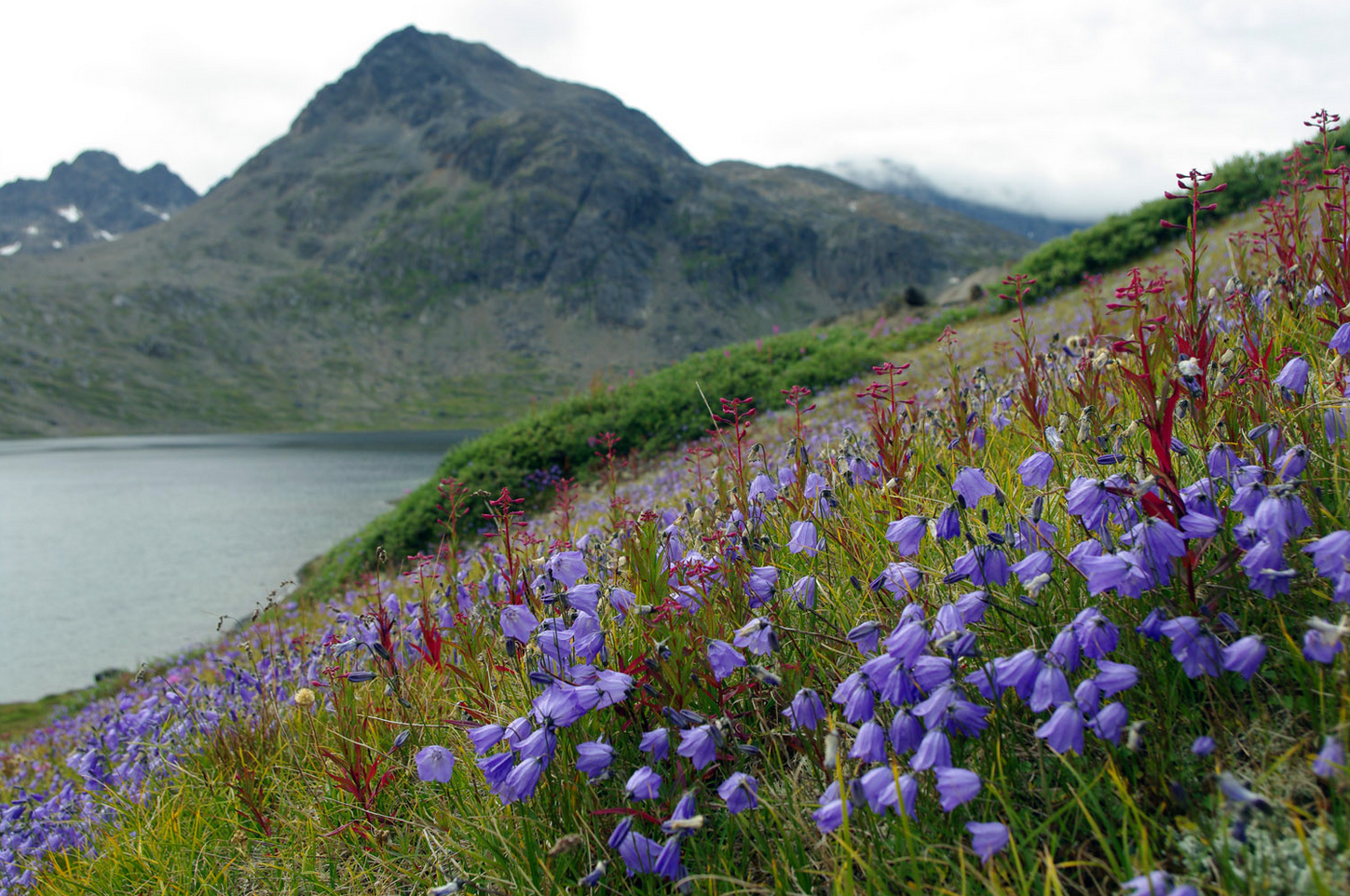
The sea that surges against that rock bound coast ever called its people out in quest of adventure. Some who went nine hundred years ago found a land in the far Northwest barred by great icebergs; but once inside the barrier, they saw deep fjords like their own at home, to which the mountains sloped down, covered with a wealth of lovely flowers. On green meadows antlered deer were grazing, the salmon leaped in brawling brooks, and birds called for their mates in the barrens. Above it all towered snow-covered peaks. They saw only the summer day; they did not know how brief it was, and how long the winter night, and they called the country Greenland. They built their homes there, and other settlers came. They were hardy men, bred in a harsh climate, and they stayed. They built churches and had their priests and bishops, for Norway was Christian by that time. And they prospered after their fashion. They even paid Peter’s Pence to Rome. There is a record that their contribution, being in kind, namely, walrus teeth, was sold in 1386 by the Pope’s agent to a merchant in Flanders for twelve livres, fourteen sous. They kept up communication with their kin across the seas until the Black Death swept through the Old World in the Fourteenth Century; Norway, when it was gone, was like a vast tomb. Two-thirds of its people lay dead. Those who were left had enough to do at home; and Greenland was forgotten.
The seasons passed, and the savages, with whom the colonists had carried on a running feud, came out of the frozen North and overwhelmed them. Dim traditions that were whispered among the natives for centuries told of that last fight. It was the Ragnarok of the Northmen. Not one was left to tell the tale. Long years after, when fishing vessels landed on that desolate coast, they found a strange and hostile people in possession. No one had ever dared to settle there since.
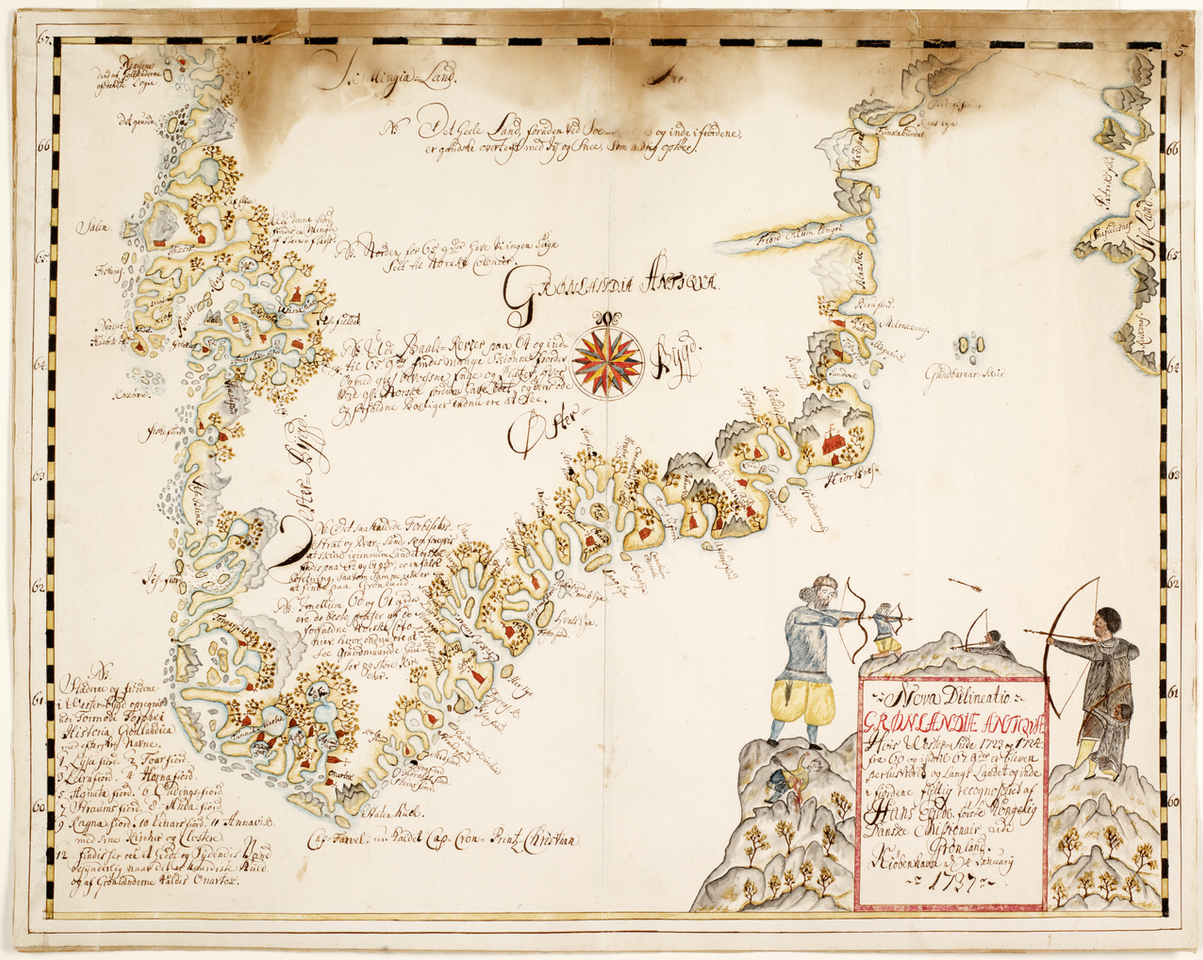
This last Egede knew, but little more. He believed that there were still settlements on the inaccessible east coast of Greenland where descendants of the old Northmen lived, cut off from all the world, sunk into ignorance and godlessness, — men and women who had once known the true light,— and his heart yearned to go to their rescue. Waking and dreaming, he thought of nothing else. The lamp in his quiet study shone out over the sea at night when his people were long asleep. Their pastor was poring over old manuscripts and the logs of whalers that had touched upon Greenland. From Bergen he gathered the testimony of many sailors. None of them had ever seen traces of, or heard of, the old Northmen.
To his bishop went Egede with his burden. Ever it rang in his ears: “God has chosen you to bring them back to the light.” The bishop listened and was interested. Yes, that was the land from which seafarers in a former king’s time had brought home golden sand. There might be more. It couldn’t be far from Cuba and Hispaniola, those golden coasts. If one were to go equipped for trading, no doubt a fine stroke of business might be done. Thus the Right Reverend Bishop Krog of Trondhjem, and Egede went home, disheartened.
At home his friends scouted him, said he was going mad to think of giving up his living on such a fool’s chase. His wife implored him to stay, and with a heavy heart Egede was about to abandon his purpose when his jealous neighbor, whose parishioners had been going to hear Egede preach, stirred up such trouble that his wife was glad to go. She even urged him to, and he took her at her word. They moved to Bergen, and from that port they sailed on May 3, 1721, on the ship Haabet (the Hope), with another and smaller vessel as convoy, forty-six souls all told, bound for the unknown North. The Danish King had made Egede missionary to the Greenlanders on a salary of three hundred daler a year, the same amount which Egede himself contributed of his scant store toward the equipment. The bishop’s plan had prevailed; the mission was to be carried by the expected commerce, and upon that was to be built a permanent colonization.
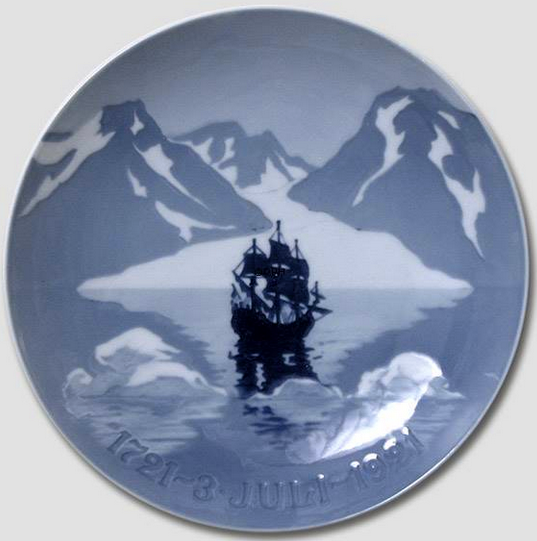
Early in June they sighted land, but the way to it was barred by impassable ice. A whole month they sailed to and fro, trying vainly for a passage. At last they found an opening and slipped through, only to find themselves shut in, with towering icebergs closing around them. As they looked fearfully out over the rail, their convoy signalled that she had struck, and the captain of Haabet cried out that all was lost. In the tumult of terror that succeeded, Egede alone remained calm. Praying for succor where there seemed to be none, he remembered the One Hundred and Seventh Psalm: “He brought them out of darkness and the shadow of death, and brake their bands in sunder.” And the morning dawned clear, the ice was moving and their prison widening. On July 3, Haabet cleared the last ice-reef, and the shore lay open before them.
The Eskimos came out in their kayaks, and the boldest climbed aboard the ship. In one boat sat an old man who refused the invitation. He paddled about the vessel, mumbling darkly in a strange tongue. He was an Angekok, one of the native medicine-men of whom presently Egede was to know much more. As he stood upon the deck and looked at these strangers for whose salvation he had risked all, his heart fell. They were not the stalwart Northmen he had looked for, and their jargon had no homelike sound. But a great wave of pity swept over him, and the prayer that rose to his lips was for strength to be their friend and their guide to the light.
Not at once did the way open for the coveted friendship with the Eskimos. While they thought the strangers came only to trade they were hospitable enough, but when they saw them build, clearly intent on staying, they made signs that they had better go. They pointed to the sun that sank lower toward the horizon every day, and shivered as if from extreme cold, and they showed their visitors the icebergs and the snow, making them understand that it would cover the house by and by. When it all availed nothing and the winter came on, they retired into their huts and cut the acquaintance of the white men. They were afraid that they had come to take revenge for the harm done their people in the olden time. There was nothing for it, then, but that Egede must go to them, and this he did.
They seized their spears when they saw him coming, but he made signs that he was their friend. When he had nothing else to give them, he let them cut the buttons from his coat. Throughout the fifteen years he spent in Greenland Egede never wore furs, as did the natives. The black robe he thought more seemly for a clergyman, to his great discomfort. He tells in his diary and in his letters that often when he returned from his winter travels it could stand alone when he took it off, being frozen stiff. After a while he got upon neighborly terms with the Eskimos; but, if anything, the discomfort was greater. They housed him at night in their huts, where the filth and the stench were unendurable. They showed their special regard by first licking off the piece of seal they put before him, and if he rejected it they were hurt. Their housekeeping, of which he got an inside view, was embarrassing in its simplicity. The dish-washing was done by the dogs licking the kettles clean. Often, after a night or two in a hut that held half a dozen families, he was compelled to change his clothes to the skin in an open boat or out on the snow. But the alternative was to sleep out in a cold that sometimes froze his pillow to the bed and the tea-cup to the table even in his own home. Above all, he must learn their language.
It proved a difficult task, for the Eskimo tongue was both very simple and very complex. In all the things pertaining to their daily life it was exceedingly complex. For instance, to catch one kind of fish was expressed by one word, to catch an other kind in quite different terms. They had one word for catching a young seal, another for catching an old one. When it came to matters of moral and spiritual import, the language was poor to desperation. Egede’s instruction began when he caught the word “kine”—what is it?
And from that time on he learned every day; but the pronunciation was as varied as the workaday vocabulary, and it was an unending task.
It proceeded with many interruptions from the Angekoks, who tried more than once to bewitch him, but finally gave it up, convinced that he was a great medicine-man himself, and therefore invulnerable. But before that they tried to foment a regular mutiny, the colony being by that time well under way, and Egede had to arrest and punish the leaders. The natives naturally clung to them, and when Egede had mastered their language and tried to make clear that the Angekoks deceived them when they pretended to go to the other world for advice, they demurred. “Did you ever see them go?” he asked. “Well, have you seen this God of yours of whom you speak so much?” was their reply. When Egede spoke of spiritual gifts, they asked for good health and blubber: “Our Angekoks give us that.” Hell-fire was much in theological evidence in those days, but among the Eskimos it was a failure as a deterrent. They listened to the account of it eagerly and liked the prospect. When at length they became convinced that Egede knew more than their Angekoks, they came to him with the request that he would abolish winter. Very likely they thought that one who had such knowledge of the hot place ought to have influence enough with the keeper of it to obtain this favor.
It was not an easy task, from any point of view, to which he had put his hands. As that first winter wore away there were gloomy days and nights, and they were not brightened when, with the return of the sun, no ship arrived from Denmark. The Dutch traders came, and opened their eyes wide when they found Egede and his household safe and even on friendly terms with the Eskimos. Pelesse — the natives called the missionary that, as the nearest they could come to the Danish präst (priest) — Pelesse was not there after blubber, they told the Dutchmen, but to teach them about heaven and of “Him up there,” who had made them and wanted them home with Him again. So he had not worked altogether in vain. But the brief summer passed, and still no relief ship. The crew of Haabet clamored to go home, and Egede had at last to give a reluctant promise that if no ship came in two weeks, he would break up. His wife alone refused to take a hand in packing. The ship was coming, she insisted, and at the last moment it did come. A boat arriving after dark brought the first word of it. The people ashore heard voices speaking in Danish, and flew to Egede, who had gone to bed, with the news. The ship brought good cheer. The Government was well disposed. Trading and preaching were to go on together, as planned. Joyfully then they built a bigger and a better house, and called their colony Godthaab (Good Hope).
The work was now fairly under way. Of the energy and the hardships it entailed, even we in our day that have heard so much of Arctic exploration can have but a faint conception. Shut in on the coast of eternal ice and silence, — silence, save when in summer the Arctic rivers were alive, and crash after crash announced that the glaciers coming down from the inland mountains were “casting their calves,” the great icebergs, upon the ocean, — the colonists counted the days from the one when that year’s ship was lost to sight till the returning spring brought the next one, their only communication with their far-off home. In summer the days were sometimes burning hot, but the nights always bitterly cold. In winter, says Egede, hot water spilled on the table froze as it ran, and the meat they cooked was often frozen at the bone when set on the table. Summer and winter Egede was on his travels between Sundays, sometimes in the trader’s boat, more often the only white man with one or two Eskimo companions, seeking out the people. When night surprised him with no native hut in sight, he pulled the boat on some desert shore and, commending his soul to God, slept under it. Once he and his son found an empty hut, and slept there in the darkness. Not until day came again did they know that they had made their bed on the frozen bodies of dead men who had once been the occupants of the house, and had died they never knew how. Peril was everywhere. Again and again his little craft was wrecked. Once the house blew down over their heads in one of the dreadful winter storms that ravage those high latitudes. Often he had to sit on the rail of his boat and let his numbed feet hang into the sea to restore feeling in them. On land he some times waded waist-deep in snow, climbed mountains and slid down into valleys, having but the haziest notion of where he would land. At home his brave wife sat alone, praying for his safety and listening to every sound that might herald his return. Tremble and doubt they did, Egede owns, but they never flinched. Their work was before them, and neither thought of turning back.
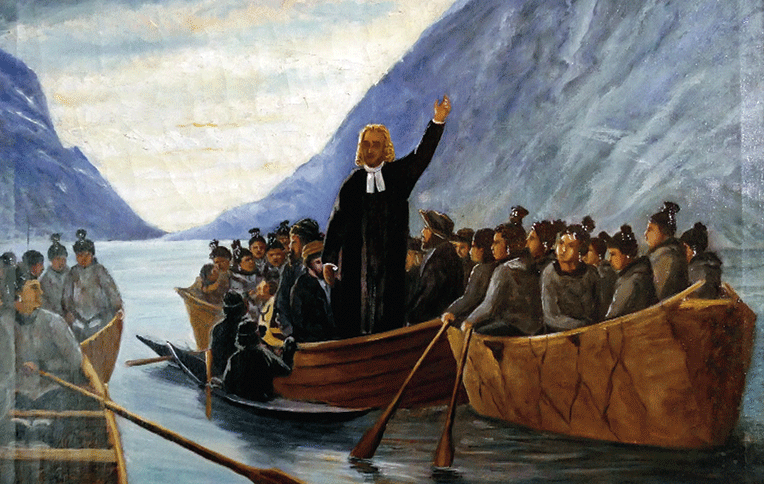
The Eskimos soon came to know that Egede was their friend. When his boat entered a fjord where they were fishing, and his rowers shouted out that the good priest had come who had news of God, they dropped their work and flocked out to meet him. Then he spoke to a floating congregation, simply as if they were children, and, as with Him whose message he bore, “the people heard him gladly.” They took him to their sick, and asked him to breathe upon them, which he did to humor them, until he found out that it was an Angekok practice, whereupon he refused. Once, after he had spoken of the raising of Lazarus from the dead, they took him to a new-made grave and asked him, too, to bring back their dead. They brought him a blind man to be healed. Egede looked upon them in sorrowful pity. “I can do nothing,” he said; “but if he believes in Jesus, He has the power and can do it.”
“I do believe,” shouted the blind man: “let Him heal me.” It occurred to Egede, perhaps as a mere effort at cleanliness, to wash his eyes in cognac, and he sent him away with words of comfort. He did not see his patient again for thirteen years. Then he was in a crowd of Eskimos who came to Godthaab. The man saw as well as Egede.
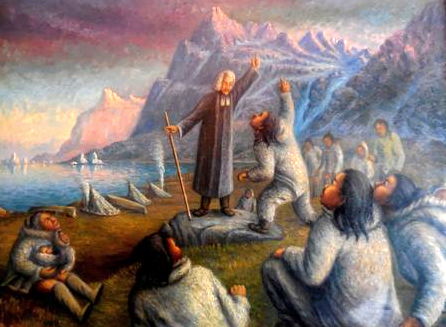
“Do you remember?” he said, “you washed my eyes with sharp water, and the Son of God in whom I believed, He made me to see.”
Children the Eskimos were in their idolatry, and children they remained as Christians. By Egede’s prayers they set great store. “You ask for us,” they told him. “God does not hear us; He does not understand Eskimo.” Of God they spoke as “Him up there.” They believed that the souls of the dead went up on the rainbow, and, reaching the moon that night, rested there in the moon’s house, on a bench covered with the white skins of young polar bears. There they danced and played games, and the northern lights were the young people playing ball. Afterward they lived in houses on the shore of a big lake overshadowed by a snow mountain. When the waters ran over the edge of the lake, it rained on earth. When the “moon was dark,” it was down on earth catching seal for a living. Thunder was caused by two old women shaking a dried sealskin between them; the lightning came when they turned the white side out. The “Big Nail” we have heard of as the Eskimos’ Pole, was a high-pointed mountain in the Farthest North on which the sky rested and turned around with the sun, moon, and stars. Up there the stars were much bigger. Orion’s Belt was so near that you had to carry a whip to drive him away.
The women were slaves. An Eskimo might have as many wives as he saw fit; they were his, and it was nobody’s business. But adultery was unknown. The seventh commandment in Egede’s translation came to read, “One wife alone you shall have and love.” The birth of a girl was greeted with wailing. When grown, she was often wooed by violence. If she fled from her admirer, he cut her feet when he overtook her, so that she could run no more. The old women were denounced as witches who drove the seals away, and were murdered. An Eskimo who was going on a reindeer hunt, and found his aged mother a burden, took her away and laid her in an open grave. Returning on the third day, he heard her groaning yet, and smothered her with a big stone. He tried to justify himself to Egede by saying that “she died hard, and it was a pity not to speed her.” Yet they buried a dog’s head with a child, so that the dog, being clever, could run ahead and guide the little one’s steps to heaven.
They could count no further than five; at a stretch they might get to twenty, on their fingers and toes, but there they stopped. However, they were not without resources. It was the day of long Sunday services, and the Eskimos were a restless people. When the sermon dragged, they would go up to Egede and make him measure on their arms how much longer the talk was going to be. Then they tramped back to their seats and sat listening with great attention, all the time moving one hand down the arm, checking off the preacher’s progress. If they got to the finger-tips before he stopped, they would shake their heads sourly and go back for a remeasurement. No wonder Egede put his chief hope in the children, whom he gathered about him in flocks.
For all that, the natives loved him. There came a day that brought this message from the North: “Say to the speaker to come to us to live, for the other strangers who come here can only talk to us of blubber, blubber, blubber, and we also would hear of the great Creator.” Egede went as far as he could, but was compelled by ice and storms to turn back after weeks of incredible hardships. The disappointment was the more severe to him because he had never quite given up his hope of finding remnants of the ancient Norse settlements. The fact that the old records spoke of a West Bygd (settlement) and an East Bygd had misled many into believing that the desolate east coast had once been colonized.
Not until our own day was this shown to be an error, when Danish explorers searched that coast for a hundred miles and found no other trace of civilization than a beer bottle left behind by the explorer Nordenskjold.
Egede’s hope had been that Greenland might be once more colonized by Christian people. When the Danish Government, after some years, sent up a handful of soldiers, with a major who took the title of governor, to give the settlement official character as a trading station, they sent with them twenty unofficial “Christians,” ten men out of the penitentiary and as many lewd and drunken women from the treadmill, who were married by lot before setting sail, to give the thing a halfway decent look. They were good enough for the Eskimos, they seem to have thought at Copenhagen. There followed a terrible winter, during which mutiny and murder were threatened. “It is a pity,” writes the missionary, “that while we sleep secure among the heathen savages, with so-called Christian people our lives are not safe.” As a matter of fact they were not, for the soldiers joined in the mutiny against Egede as the cause of their having to live in such a place, and had not sickness and death smitten the malcontents, neither he nor the governor would have come safe through the winter. On the Eskimos this view of the supposed fruits of Christian teaching made its own impression. After seeing a woman scourged on shipboard for misbehavior, they came innocently enough to Egede and suggested that some of their best Angekoks be sent down to Denmark to teach the people to be sober and decent.
There came a breathing spell after ten years of labor in what had often enough seemed to him the spiritual as well as physical ice-barrens of the North, when Egede surveyed a prosperous mission, with trade established, a hundred and fifty children christened and schooled, and many of their elders asking to be baptized. In the midst of his rejoicing the summer’s ship brought word from Denmark that the King was dead, and orders from his successor to abandon the station. Egede might stay with provisions for one year, if there was enough left over after fitting out the ship; but after that he would receive no further help.
When the Eskimos heard the news, they brought their little children to the mission. “These will not let you go,” they said; and he stayed. His wife, whom hardship and privation and the lonely waiting for her husband in the long winter nights had at last broken down, refused to leave him, though she sadly needed the care of a physician. A few of the sailors were persuaded to stay another year. “So now,” Egede wrote in his diary when, on July 31, 1731, he had seen the ship sail away with all his hopes, “I am left alone with my wife and three children, ten sailors and eight Eskimos, girls and boys who have been with us from the start. God let me live to see the blessed day that brings good news once more from home.” His prayer was heard. The next summer brought word that the mission was to be continued, partly because Egede had strained every nerve to send home much blubber and many skins. But it was as a glimpse of the sun from behind dark clouds. His greatest trials trod hard upon the good news.
To rouse interest in the mission Egede had sent home young Eskimos from time to time. Three of these died of small pox in Denmark. The fourth came home and brought the contagion, all unknown, to his people. It was the summer fishing season, when the natives travel much and far, and wherever he went they flocked about him to hear of the “Great Lord’s land,” where the houses were so tall that one could not shoot an arrow over them, and to ask a multitude of questions: Was the King very big? Had he caught many whale? Was he strong and a great Angekok? and much more of the same kind. In a week the disease broke out among the children at the mission, and soon word came from islands and fjords where the Eskimos were fishing, of death and misery unspeakable. It was virgin soil for the plague, and it was terribly virulent, striking down young and old in every tent and hut. More than two thousand natives, one-fourth of the whole population, died that summer. Of two hundred families near the mission only thirty were left alive. A cry of terror and anguish rose throughout the settlements. No one knew what to do. In vain did Egede implore them to keep their sick apart. In fever delirium they ran out in the ice-fields or threw themselves into the sea. A wild panic seized the survivors, and they fled to the farthest tribes, carrying the seeds of death with them wherever they went. Whole villages perished, and their dead lay unburied. Utter desolation settled like a pall over the unhappy land.
Through it all a single ray of hope shone. The faith that Egede had preached all those years, and the life he had lived with them, bore their fruit. They had struck deeper than he thought. They crowded to him, all that could, as their one friend. Dying mothers held their suckling babes up to him and died content. In a deserted island camp a half-grown girl was found alone with three little children. Their father was dead. When he knew that for him and the baby there was no help, he went to a cave and, covering himself and the child with skins, lay down to die. His parting words to his daughter were, “Before you have eaten the two seals and the fish I have laid away for you, Pelesse will come, no doubt, and take you home. For he loves you and will take care of you.” At the mission every nook and cranny was filled with the sick and the dying. Egede and his wife nursed them day and night. Childlike, when death approached, they tried to put on their best clothes, or even to have new ones made, that they might please God by coming into His presence looking fine. When Egede had closed their eyes, he carried the dead in his arms to the vestibule, where in the morning the men who dug the graves found them. At the sight of his suffering the scoffers were dumb. What his preaching had not done to win them over, his sorrows did. They were at last one.
That dreadful year left Egede a broken man. In his dark moments he reproached himself with having brought only misery to those he had come to help and serve. One thorn which one would think he might have been spared rankled deep in it all. Some missionaries of a dissenting sect — Egede was Lutheran — had come with the smallpox ship to set up an establishment of their own. At their head was a man full of misdirected zeal and quite devoid of common-sense, who engaged Egede in a wordy dispute about justification by faith and condemned him and his work unsparingly. He had grave doubts whether he was in truth a “converted man.” It came to an end when they themselves fell ill, and Egede and his wife had the last word, after their own fashion. They nursed the warlike brethren through their illness with loving ministrations and gave them back to life, let us hope, wiser and better men.
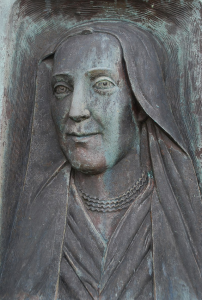
At Christmas, 1735, Egede’s faithful wife, Gertrude, closed her eyes. She had gone out with him from home and kin to a hard and heathen land, and she had been his loyal helpmeet in all his trials. Now it was all over. That winter scurvy laid him upon a bed of pain and, lying there, his heart turned to the old home. His son had come from Copenhagen to help, happily yet while his mother lived. To him he would give over the work. In Denmark he could do more for it than in Greenland, now he was alone. On July 29, 1736, he preached for the last time to his people and baptized a little Eskimo to whom they gave his name, Hans. The following week he sailed for home, carrying, as all his earthly wealth, his beloved dead and his motherless children.
The Eskimos gathered on the shore and wept as the ship bore their friend away. They never saw him again. He lived in Denmark eighteen years, training young men to teach the Eskimos. They gave him the title of bishop, but so little to live on, that he was forced in his last days to move from Copenhagen to a country town, to make both ends meet. His grave was forgotten by the generation that came after him. No one knows now where it is; but in ice-girt Greenland, where the northern lights on wintry nights flash to the natives their message from the souls that have gone home, his memory will live when that of the North Pole seeker whom the world applauds is long forgotten. Hans Egede was their great man, their hero. He was more, — he was their friend.
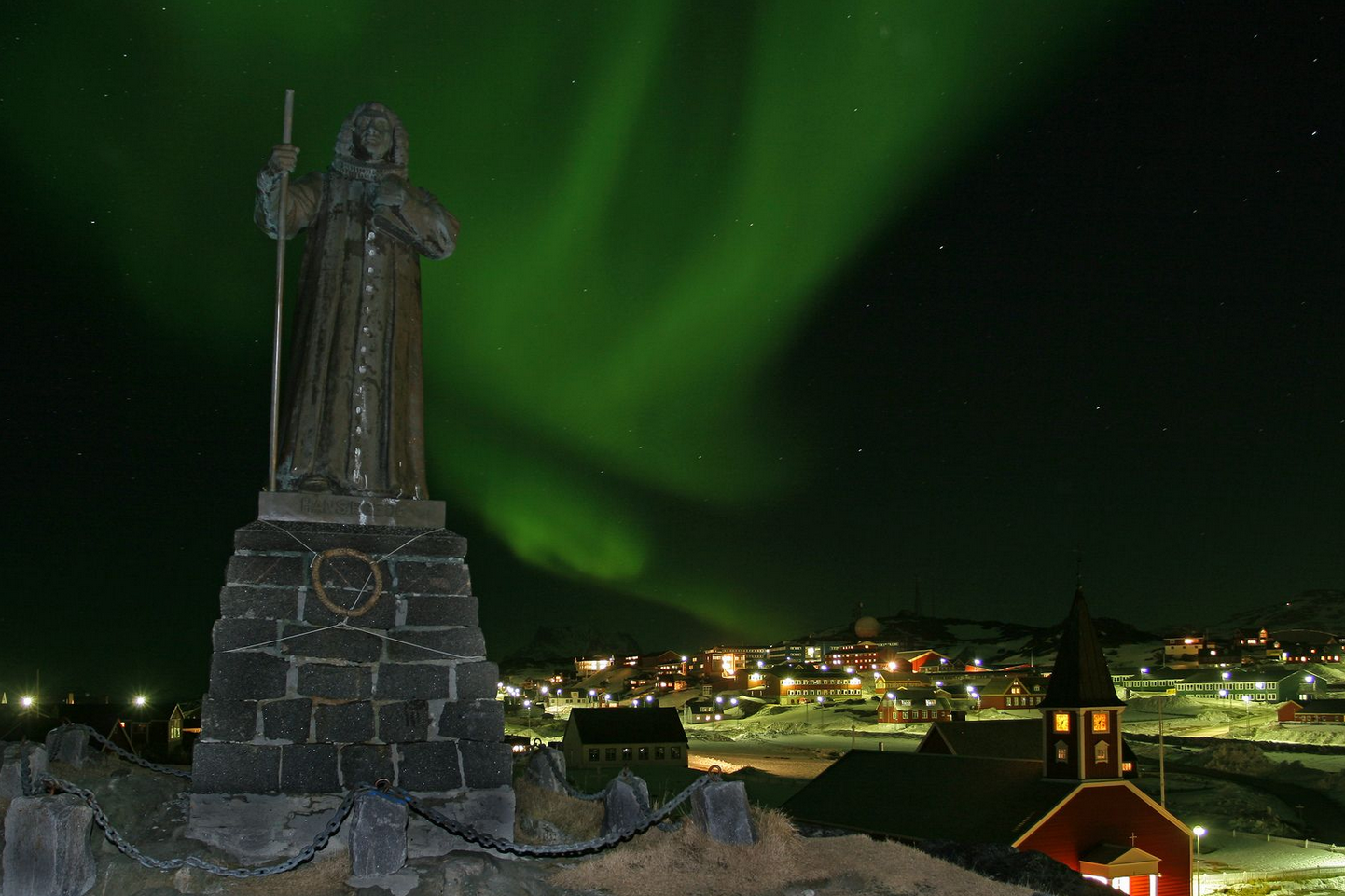





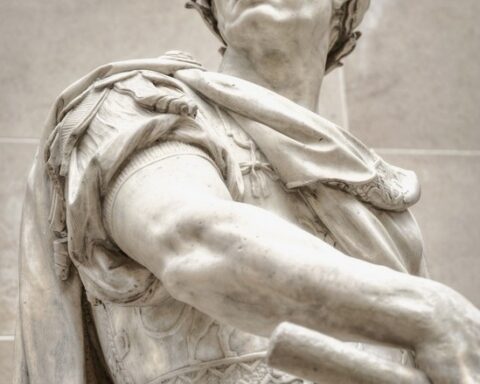
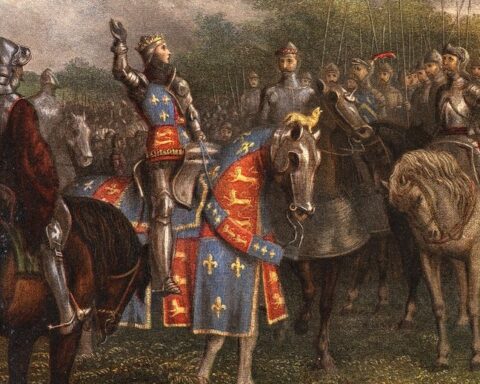
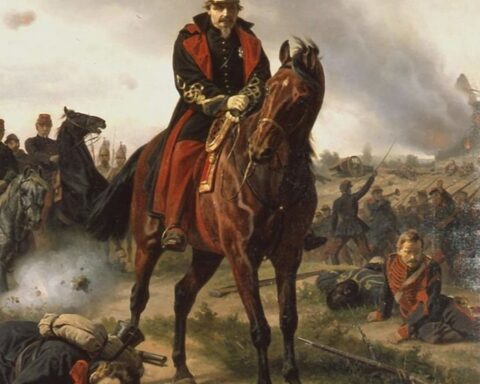
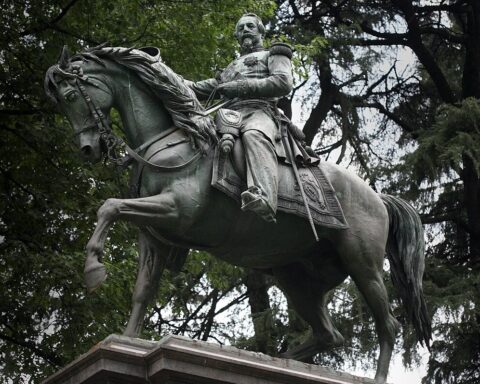
4.5